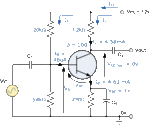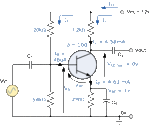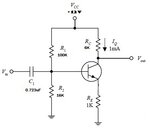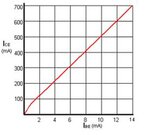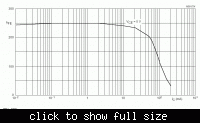Qube
Member level 5
Hello friends,i had some doubt in designing a common emitter amplifier
Here is the example schematic:-
**broken link removed**
1)Can you tell me its Input impedance value and the output impedance of that circuit
2)And as far as my knowledge,those coupling capacitors are used to pass AC in and out,and block DC to pass to next stage, and the capacitors can be used as filters..using
Cin=1/(2*pi x F x Zin)
Cout=1/(2*pi x F x Zout)
F is maximum frequency that the filter can let pass,any input frequency higher that F value will be rejected..
Am i right??
Please correct me if i'm wrong...would like to learn
Here is the example schematic:-
**broken link removed**
1)Can you tell me its Input impedance value and the output impedance of that circuit
2)And as far as my knowledge,those coupling capacitors are used to pass AC in and out,and block DC to pass to next stage, and the capacitors can be used as filters..using
Cin=1/(2*pi x F x Zin)
Cout=1/(2*pi x F x Zout)
F is maximum frequency that the filter can let pass,any input frequency higher that F value will be rejected..
Am i right??
Please correct me if i'm wrong...would like to learn
Attachments
Last edited:
